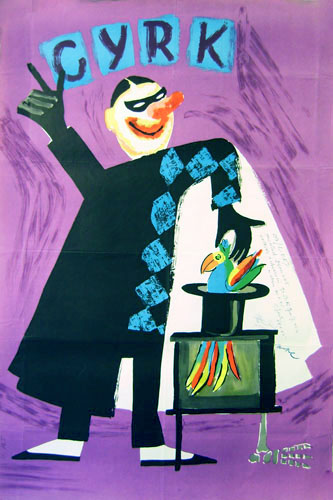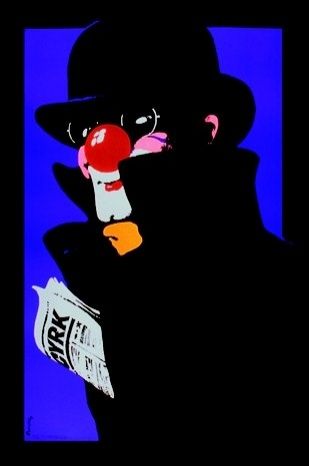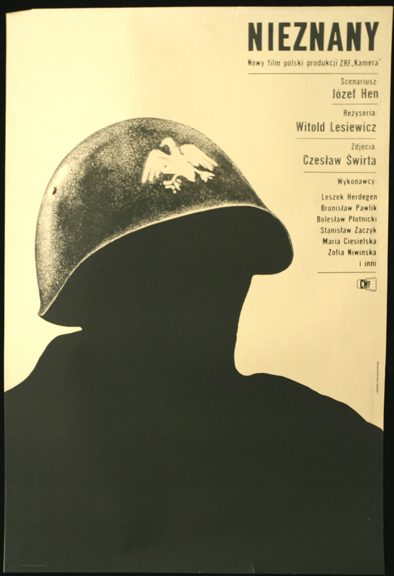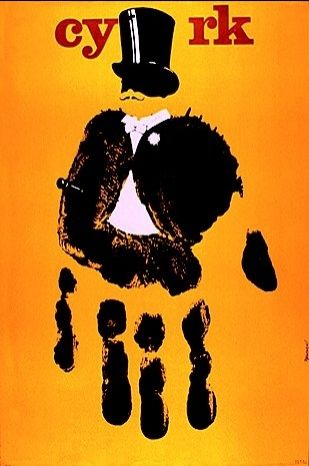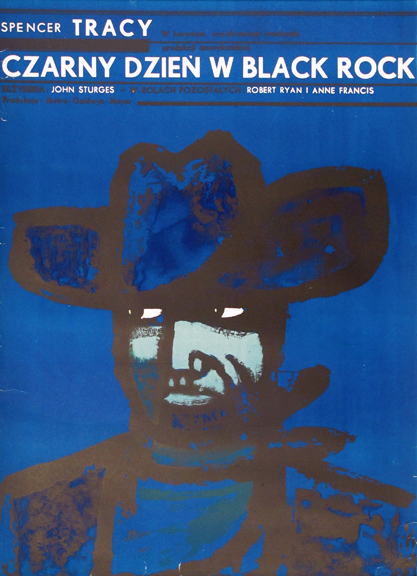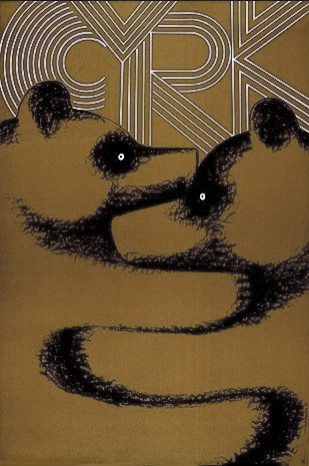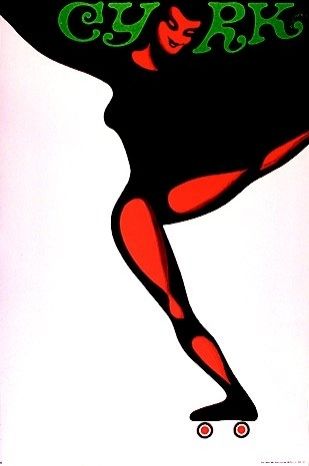The end of World War II marked the beginning of a new period in the development of Polish poster art. Building sites throughout Poland were enclosed with wooden fences which were quickly covered with posters. These fences became the substitutes for the absent museums and galleries, and posters became the art of the street. During this time, at the Warsaw Academy of Fine Arts, poster design flourished. A new branch of art emerged – the Polish School of Posters.
Magician, Bird & Hat by Stanislaw Miedza-Tomaszewski (1965)
This Cyrk poster (aka Circus) is unique as it bears the censors’ signature/s. ‘Censors’ signature’ indicates that a poster bears the censors’ hand-written signature or initials giving authorization to publish a particular image and the designated quantity. The Polish government (under Soviet-supported Communist regime) subjected all poster designs to censorship and government approval both at the design stage and then again, before printing, giving permission to print a specified number of a particular poster by signing and dating a sample printed poster.
From the 1950s through the 1980s, the Polish School of Posters successfully married the experiences and ambitions of painting with the succinctness and easily grasped metaphor of the poster. The distinction between designer and artist disappeared. The Polish poster became a national tradition and became recognized as the best in contemporary poster art, comparable to France’s La Belle Époque of the 1890s.
Polish posters are more than aloof graphic images – they also reveal the artists’ emotional involvement with the subject as well as his or her commentary on society. Often using camouflage and commonly understood ironies, they communicated surreptitiously with the public. The symbolism was frequently generic: e.g. bears to represent the former Soviet Union (the Russian bear) but at other times the hidden meaning was specific to the poster. Thus, Polish posters should be more than viewed; they should be read, pondered and digested. When the Polish poster crossed the fine line between visual communication and art, it became a lively, creative branch of contemporary art.
Spy Clown with Newspaper by artist Waldemar Swierzy (1985)
This poster is a subsequent printing of a 1975 poster – all printings were by agencies of the Polish Communist government which used the identical presses for all subsequent printing making it virtually impossible to tell them apart unless one is an expert and works intimately with Polish posters.
Nieznany
Artist: Leszek Holdanowicz
Printed: 1964
This Propaganda Poster is by the award winning designer Leszek Holdanowicz who was a former student of Tomaszewski
Handprint With Top Hat
Artist: Andrzej Pagowski
Year Printed: 1978
This poster was for the 1955 MGM film
Bad Day At Black Rockstarring Spencer Tracy. The poster was designed by Maciej Hibner for the film’s release in Poland in 1966
2 Hugging Bears
Artist: Wiktor Gorka
Year Printed: 1971
Woman roller skating
Artist: Wiktor Gorka
Year Printed: 1970
Check back with this blog as we continue the story of the Polish School of Posters
Check out more Polish posters here!
Sign-up for our newsletter and get news, updates and special offers
For lovers of Vintage Posters, Photography and Art — Limited Runs!
Limited Runs, the premier destination for discovering and buying the best in original vintage posters, print art and fine art photography, continues to add new items to the site every day and each week we feature some of our latest additions of original vintage film, advertising and rock posters, art prints and photography.
Follow Limited Runs on:

